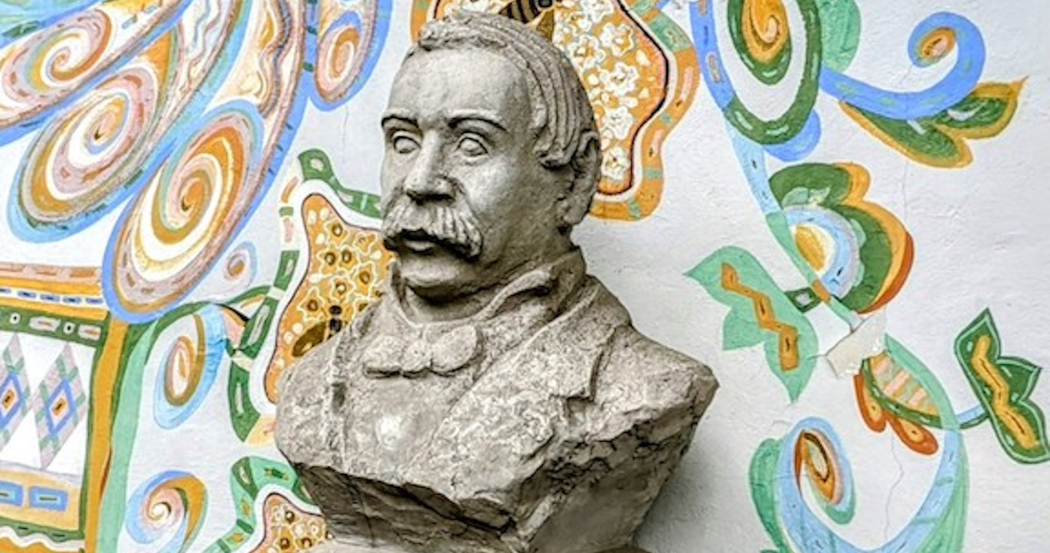Father of the Modern Hive
By: John Gordon Sennett
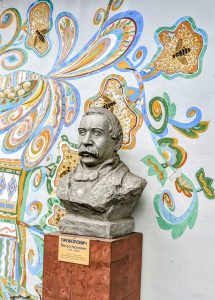 “Assigning myself to one branch of agriculture—beekeeping, I devoted my whole life, all my thoughts, all my attention to it.” —Petro Ivanovych Prokopovych
“Assigning myself to one branch of agriculture—beekeeping, I devoted my whole life, all my thoughts, all my attention to it.” —Petro Ivanovych Prokopovych
Ukraine is a beekeeping nation and so it is apt that the Father of the Hive hails from there. Petro Prokopovych is recognized worldwide as the founder of commercial beekeeping and inventor of the first moveable hive frame (Prokopovych called these frames sleeves). The wide adoption and commercialization of the Langstroth Hive via U.S. Patent Number 9300 on October 5, 1852 drove Prokopovych’s Hive into obscurity, or did it? A brief history sketch is needed to understand how long beekeeping has been practiced here.
Ukraine began as a nation under the name Kyivan Rus whose lands stretched from the Baltic Sea down to the Black Sea. Kyivan Rus was a regional power from the ninth to the 12th century and its influence rose mainly due to its strategic location for trade and defense on the banks of the Dnipro River. Two of Kyivan Rus’s top commodities for trade were honey and beeswax. Kyiv’s entire history is aligned with that of honey and beeswax. In Ukrainian, the word for honey is “Med” and it is assumed that the drink that the Vikings and many others loved so much, mead, is derived from that Old Slavonic word. Yaroslav the Wise (11th century) developed a system of law and codes which became known as Pravda of Yaroslav (Truth of Yaroslav) (The full text of the code in English can be read here: https://web.archive.org/web/20220217103027/, http://web.grinnell.edu/individuals/kaiser/exrp.html). Bees are mentioned in at least seven chapters of this ancient code of law. Many monasteries in Kyivan Rus including the Kyiv Pecehersk Lavra (founded 1051 A.D.) also have their own apiaries. Beekeeping has consistently been practiced on the grounds of the Kyiv Pechersk Lavra for nine hundred and seventy-two years. Truly, Ukraine is a nation partially founded on beekeeping.
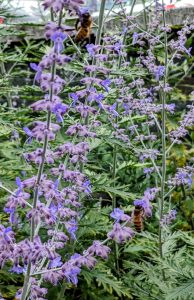
Petro Prokopovych was born in Mytchenky, a small village in Northern Ukraine (a region that now directly borders Russia) on June 29, 1775 about the time that U.S. colonies were preparing for the Revolutionary War. His father was an Orthodox priest of Cossack origin. One must understand that the Cossacks considered themselves free men and were not part of the serf system under the ruling Russian Empire. Serfs in Russia were much like slaves in the U.S. in that they could be bought, sold and traded. Cossacks were military men for the most part and often served in the armies of Russia due to their unique fighting and organizational abilities. Petro Prokopovych first attended the Kyiv-Mohyla Academy (established 1615 as an Orthodox Christian School of Theology). Students from all over Eastern Europe and Greece attended the academy. Here, Petro learned French, German, Greek, Latin and Russian. Upon graduation, there were not many opportunities for the graduates due to a rampant campaign of Russification under Empress Catherine.
Cossacks almost always turned to military duty when other opportunities did not exist and thus this is what Petro did under the guidance of his parents. Petro entered the Pereyslav Regiment (originally formed by Ukrainian Hetman but now under Russian rule) and graduated within two years from their military school. He participated in the construction of Odesa and its port before his regiment was sent to quell the Warsaw Uprising (1794) under Count (General) Alexander Suvorov. General Suvorov had allowed his troops to plunder and loot Warsaw upon their success. Petro was a peace and nature loving person so this brutality had to have affected him, but he was promoted to the rank of lieutenant. In 1798, Petro resigned from the military and tried to return home. His father was not willing to allow him to stay because he considered it an embarrassment that his son had resigned from such a successful military career. This is the event that led Petro to beekeeping.
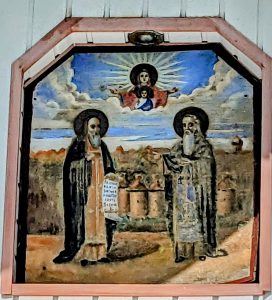
Petro went to stay with his younger brother who had a small apiary in 1799, not far from his native home. He spent that year studying the bees and their behavior. The following year, he purchased a small plot of land with 37 beehives. His first year started well but ended in tragedy when his farm burned down destroying some of the beehives. Discouraged but not deterred, he spent the following year digging log dugouts for the bees. Log hives were the most common way of keeping bees in those times and in some places in Ukraine and Belarus, this practice is still adhered to. In another eight years, his apiary totaled 580 beehives. No literature on beekeeping satisfied Petro, especially when it came to queens. His knowledge was already gaining respect as in his ninth year the Moscow Zemledelchesskaya Gazette wrote, “Mr. Prokopovych, we can say, is the only connoisseur of bees in our time, not only in our country, but even in the whole of Europe, whose remarks and sayings about these insects have no equal in terms of completeness, simplicity and truthfulness. Yet, in the West, Prokopovych is barely even referred to despite having written over 70 articles in various European languages.
For seven years, Petro Prokopovych worked on designs for beehives that were more friendly to the bees as he was troubled within his soul with having to destroy the bees for their honey. Finally, in 1814, his design was complete, and thus the Prokopovych Hive was introduced. This was the first moveable frame hive designed and used worldwide. Petro called his frames “sleeves” when he introduced the invention. Simultaneously, Petro also designed the first Queen Excluder which was placed in his new invention. A. I. Root himself praised Prokopvych’s hive stating, “His shop frame has much in common with the modern sectional frame with cutouts for the passage of bees, the walls of his hive are tied in a lock. He used methods that were far ahead of his time. Some beekeepers believed that Jeron invented the movable frame (Germany) in 1845, but, without a doubt, the latter had no right to this glory.”
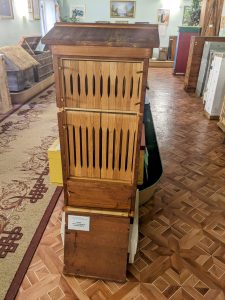 Petro Prokopovych, generous soul that he was, opened the first beekeeping school in Ukraine (then under the Russian Empire) in 1827 in his native village of Mytchenko. School lasted for two years with practical knowledge in the first year to include tools, carpentry, reading, writing and the honey bee life cycle. In the second year, students practiced hands-on beekeeping. Most of the pupils were serfs from Ukraine, Belarus, Bashkiria and Georgia as well as foreign students from Germany, Poland, Italy and Czechoslavkia. Students studied in groups in their own native language. Prokopovych insisted on spiritual education and students were held to a Christian moral code by taking an oath. He sought to make good people out of his students to include respect for nature, man and God. Petro used the Joseph Lancaster Method of Education (Monitorial System) with its motto being, “He who teaches, learns.” Top students were responsible for teaching their fellow students. The school operated successfully for 53 years and graduated over 700 students.
Petro Prokopovych, generous soul that he was, opened the first beekeeping school in Ukraine (then under the Russian Empire) in 1827 in his native village of Mytchenko. School lasted for two years with practical knowledge in the first year to include tools, carpentry, reading, writing and the honey bee life cycle. In the second year, students practiced hands-on beekeeping. Most of the pupils were serfs from Ukraine, Belarus, Bashkiria and Georgia as well as foreign students from Germany, Poland, Italy and Czechoslavkia. Students studied in groups in their own native language. Prokopovych insisted on spiritual education and students were held to a Christian moral code by taking an oath. He sought to make good people out of his students to include respect for nature, man and God. Petro used the Joseph Lancaster Method of Education (Monitorial System) with its motto being, “He who teaches, learns.” Top students were responsible for teaching their fellow students. The school operated successfully for 53 years and graduated over 700 students.
Petro’s students clearly disseminated the information they learned from him as they returned to their home countries. John S. Harbison’s innovative “California Hive” built in 1857-1858 basically resembles Prokopovych’s Hive with the exception of the top frames built for honeycomb. Lorenzo Langstroth surely must have been familiar with the Prokopovych Hive even though he is credited with “bee space”, maybe he is just credited with the naming of it. Prokopovych surely understood bee space based on the spacing of the sleeves (frames) in his hive. A thorough examination of Prokopovych’s writings that still exist would have to be explored. Both Harbison and Langstroth were from Philadelphia which had a large German speaking population. Thus, it is possible that Prokopovych’s students or knowledge traveled the Atlantic and his expertise found its way to them.
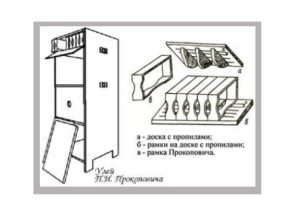
Translation
a – Board with slats
b – frames on board with slats
B – Prokopovych frames
Prokopovych died at 75 years of age in 1850, just as American beekeeping was becoming more industrialized. In Ukraine, they call Prokopvych the father of “rational beekeeping”. He is well revered with several museums, institutes and memorials dedicated to his legacy. Petro’s son named Stepan Velykdan increased Prokopovych’s apiary to be the largest in Europe with allegedly over 12,000 beehives. Petro had married a peasant woman (Borovyk) and was not allowed to pass his surname to Stepan because of Russian Imperial laws. Stepan was proud of the Ukrainian heritage his father had passed to him including keeping and maintaining the Ukrainian language. The great poet of Ukraine, Taras Shevchenko, is said to have visited Petro and may even have based characters in his story “The Twins” on that meeting. Here in Ukraine, his legacy lives on as does the beekeeping industry that keeps this nation’s rural and urban economy rolling while at war. In Slovenia, the beehives in the bee houses look like a modified Prokopovych Hive. So, now when you think of Ukraine, don’t think so much about war but what this nation’s people and its impact on the hobby and business of beekeeping. Please remember this humble and kind man, Petro Prokopovych, and his contribution to an ancient form of husbandry that so many of us know and love.
“…So that the most intelligent people by nature, who differ from others in kindness, intelligence, diligence, perseverance and natural inclination to bees, were chosen for the supervisor of bee farms. The choice of such human qualities is very difficult, but it depends on God all further success.” —Petro Prokopovych
References:
В.Г КОРЧЕМНИЙ: До 220 – річчя з дня народження П.І. прокоповича ПРОКОПОВИЧ ПЕТРО ІВАНОВИЧ Тернопіль, “Поліграфіст”, 1995 (V. G. KORCHEMNY To the 220th anniversary of the birth of P.I. Prokopovich PETRO IVANOVYCH PROKOPOVYCH Ternopil, “Polygraphist”, 1995)
https://nashi.engineeringweek.org.ua/english/story/prokopovich.php
https://we.org.ua/kultura/narodni-remesla/istoriya-vynajdennya-vulyka-ukrayintsem-petrom-prokopovychem/#imageclose-4498 (In Ukrainian)
https://beeprofessor.com/petro-prokopovych/




